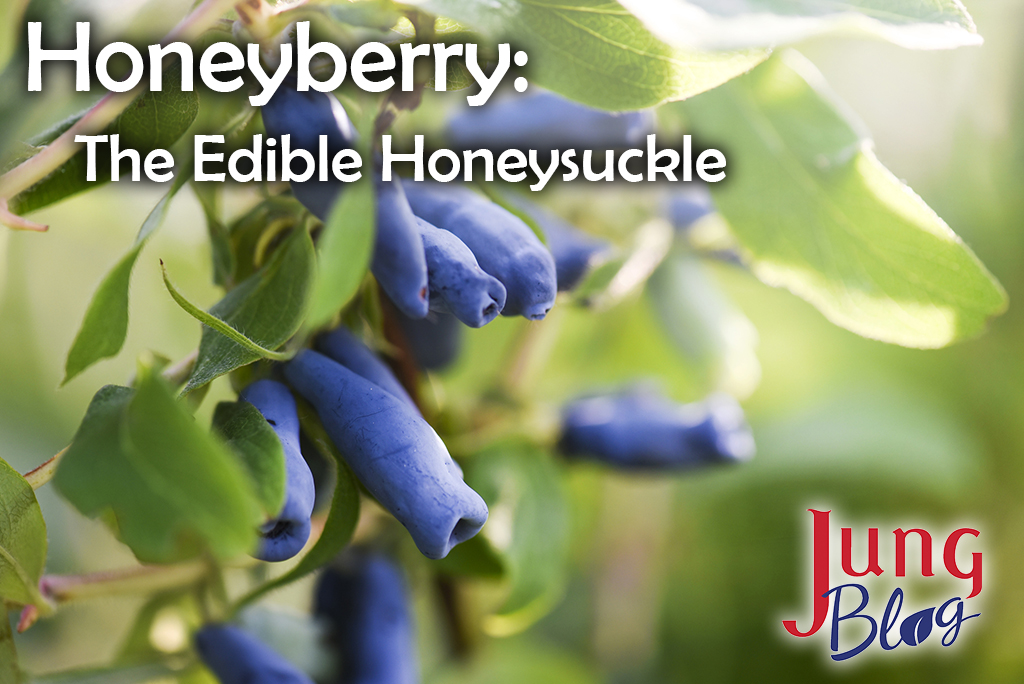
What we call Honeyberries are actually a type of fruiting Honeysuckle – Lonicera caerulea, some of which are native to our Pacific Northwest. Haskaps, as they are also called, is the name used by the native Ainu people of the northern islands of Japan, where other subspecies also grow. Their word for them, “Haskaps” translates to “Edible Blue Honeysuckle”. Pretty simple and descriptively accurate.
These shrubby fruit-forming honeysuckles are an exciting new option for home gardeners and farm-stand growers. Honeyberries are tough, cold-hardy plants that produce loads of soft, sweet blue elongated berries that can be used and eaten just like blueberries, but Honeyberry plants grow easily and thrive where true blueberries will not.
Growing Tips For Honeyberries
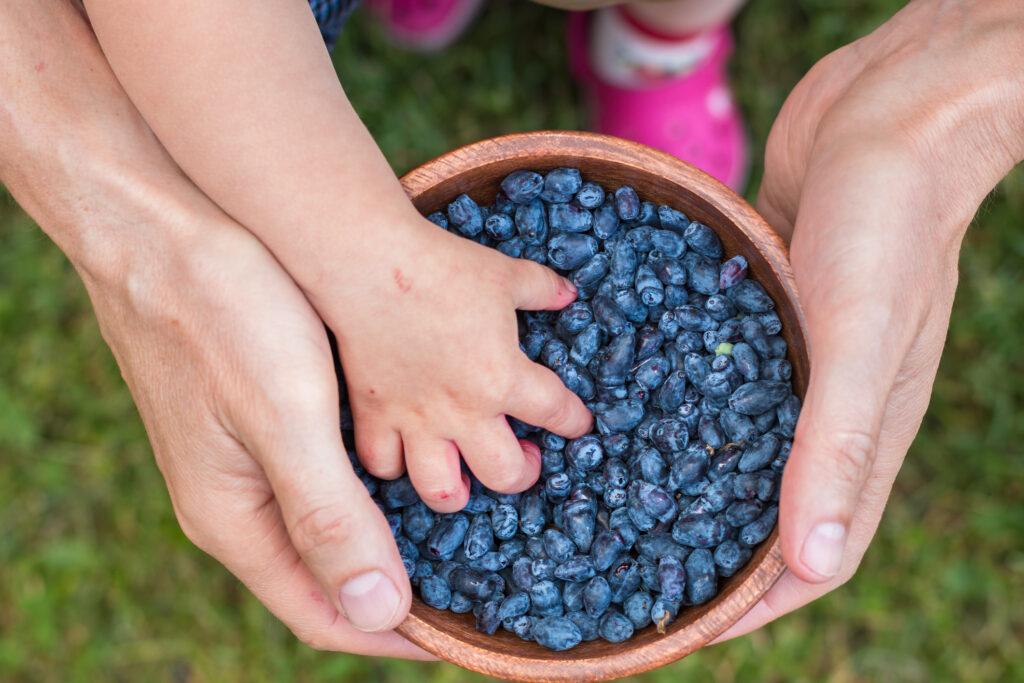
Unlike blueberries that require a specific, low soil pH (4.5 to 5.5) to grow and produce well, honeyberries do not. As long as the soil is well-drained, honeyberries will grow well and produce fruit in average garden soils. Honeyberries are a good choice for fruiting gardens from zones 3 to 8, which has led to their wide and ever-expanding appeal. A location in full sun is best, but they can tolerate a bit of shade and still produce. Honeyberries are truly a fruiting workhorse in the garden.
The Importance Of Cross-Pollination & Plant Spacing
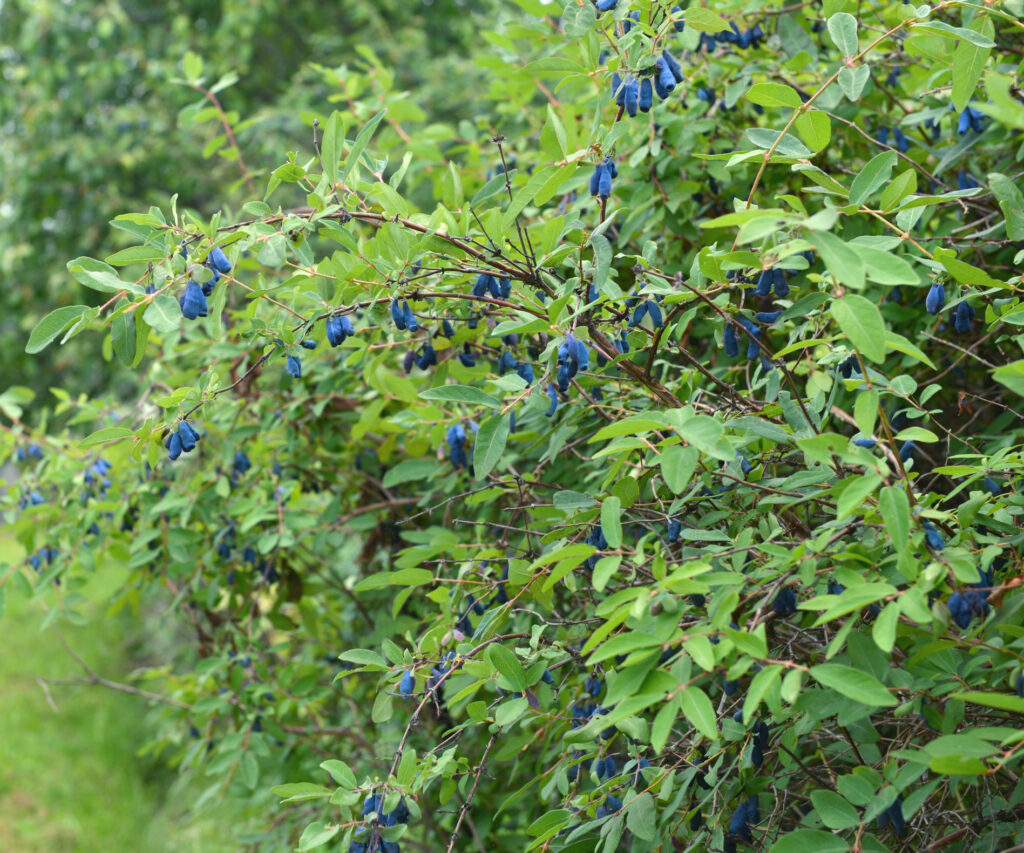
Honeyberries, like many other fruiting plants, are dependent on cross-pollination to produce well. This means at least two different honeyberry cultivars need to be planted in fairly close proximity. Ideally, you would have room for and plant at least 4 bushes, of at least two different varieties near one another, but you could plant all 4 different varieties as long as they are proper pollinating partners blooming at a similar time to allow for good pollination. The more plants you have, the more berries will be produced. Alternating varieties in a one row is a planting plan that works fine, or if space allows, plant them in a grid pattern. Whichever way you choose, space the plants 6 to 8 ft. apart for best results. Honeyberry flowers are bee-pollinated, and with their early-season blooms, they provide bee pollinators a much-needed source of nectar. Bumblebees, with their longer proboscis, are great pollinators.
Honeyberry Pollination Groups
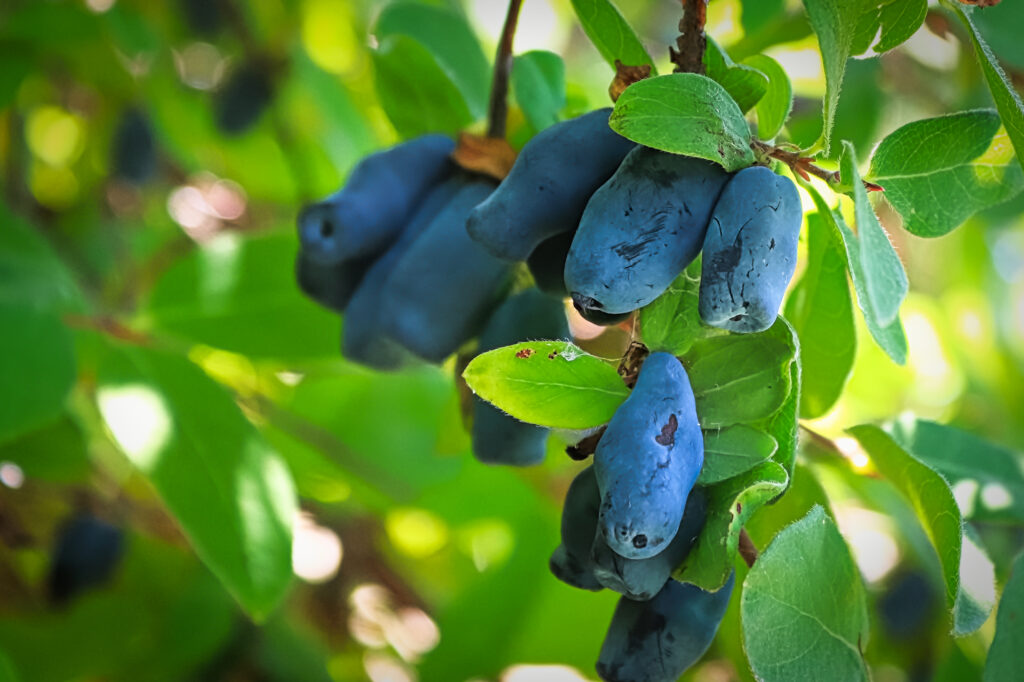
Group 1 contains a couple of popular selections native to Eastern Russia and Siberia. Both of these plants grow to a mature size of only 3 to 4 ft. high and wide, making them a good choice for smaller gardens, and these varieties are generally best suited for gardeners in USDA zones 3-6.
- Blue Velvet™ – High-yielding plant that bears large berries
- Blue Moon™ – Produces large, sweet, tasty fruits
These varieties are both agreeable pollinating partners with a recommendation of 5 to 8 plants per garden for best fruit production. Spacing for these two smaller types would be 4 to 6 ft. apart.
Group 2 offers several named selections from our fine Canadian partners. The University of Saskatchewan has the world’s most productive and progressive Honeyberry breeding program. It is from their research program that we offer 9 different and outstanding Honeyberry varieties with more zone flexibility. In our catalog and online we list specific or best pollination pairings for you from these different selections. Here are just a few of our favorites:
- Berry Blue – bears abundant high-quality fruits and with its long blooming period, it makes a great pollinating partner for Aurora, Borealis, Honey Bee, and Tundra.
- Blizzard – bears the largest fruits of any other with average ripening in June with sweet-tasting berries and partners with Boreal Beauty and Boreal Beast.
- Boreal Beast – produces later ripening, firm berries on sturdy 3 to 5 ft. sized plants with better than average mildew resistance. B. Beast pairs well with other later blooming selections like Boreal Beauty and Blizzard.
- Honey Bee – have the most sweet-tart tasting fruits with a high yield and holding capacity. Honey Bee partners well with Aurora, Borealis, and Tundra. All of which are early blooming and ripening.
Pruning & Fruiting Honeyberries
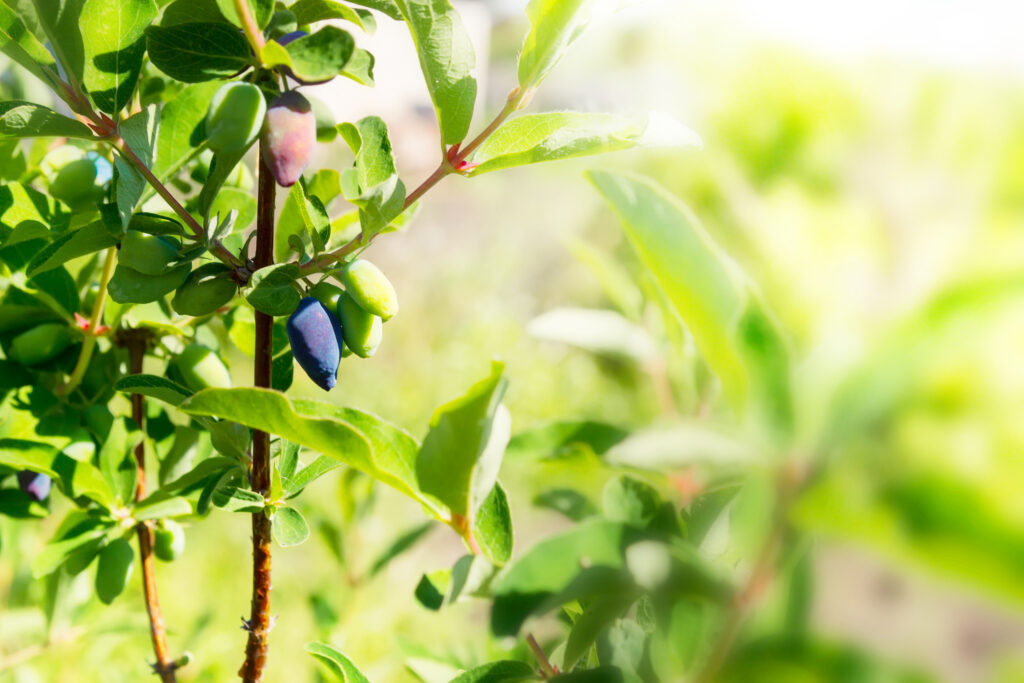
Honeyberries produce fruit on 1-year-old wood, and the best yields are produced from these strong, vigorous 1-year-old branches. Pruning of honeyberries should happen while plants are dormant in the winter months, removing any dead branches first. Even in optimum conditions, honeyberries are not considered fast-growing but they will grow more vigorously as they gain maturity.
For the first 3 to 5 years, allow plants to grow as much as possible with little to no pruning. Once they reach a mature size of 3 to 5 ft. you can prune them annually to maximize the 1-year-old wood and remove old or damaged branches using thinning cuts only. Avoid tip pruning or topping your plants. All fruit production occurs at the ends of the branches. Pruned tips = No fruit!
Honeyberries will typically reach bearing age within 2 to 3 years after planting, becoming more productive as they mature, as long as proper pollination is achieved. Don’t pick too soon, berries will typically turn their beautiful blue color 2 to 3 weeks before they are truly ripe. Use protective netting to prevent birds from beating you to them before they are ready for harvest.
Fertilizing Honeyberries
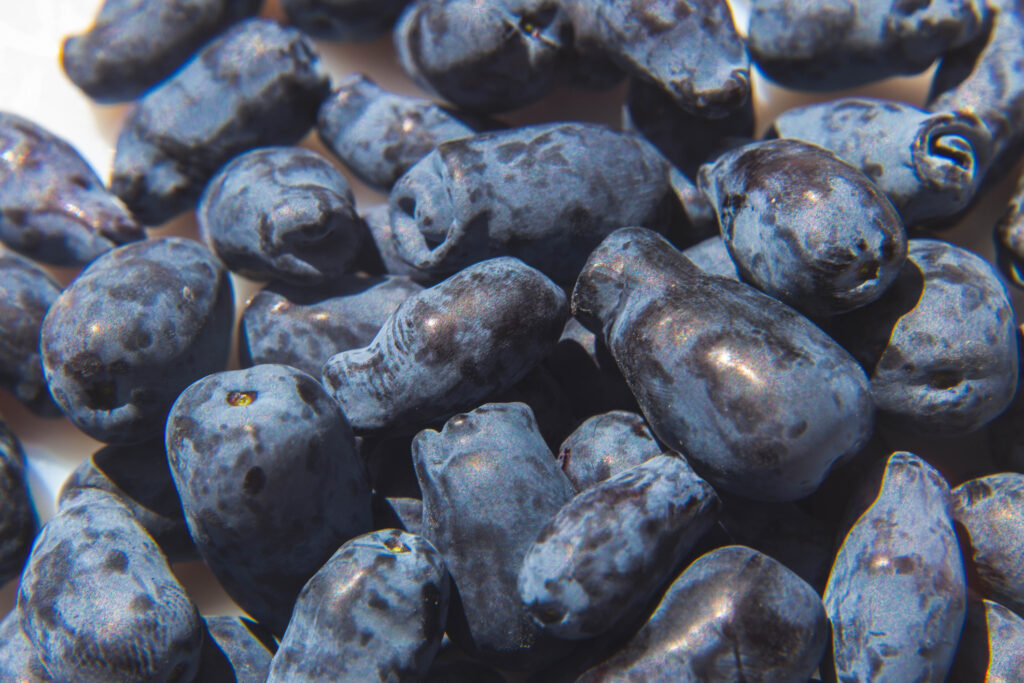
While plants are perfectly hardy and vigorous in mediocre soils, they will respond well to and produce higher yields with the addition of fertilizer or top dressing of aged manure. Application of a balanced, all-purpose 10-10-10 fertilizer like Espoma Garden Food is recommended. Apply fertilizer early in spring and again after harvest, otherwise adding 2 in. of well-rotted manure once per year, in the spring is also beneficial.
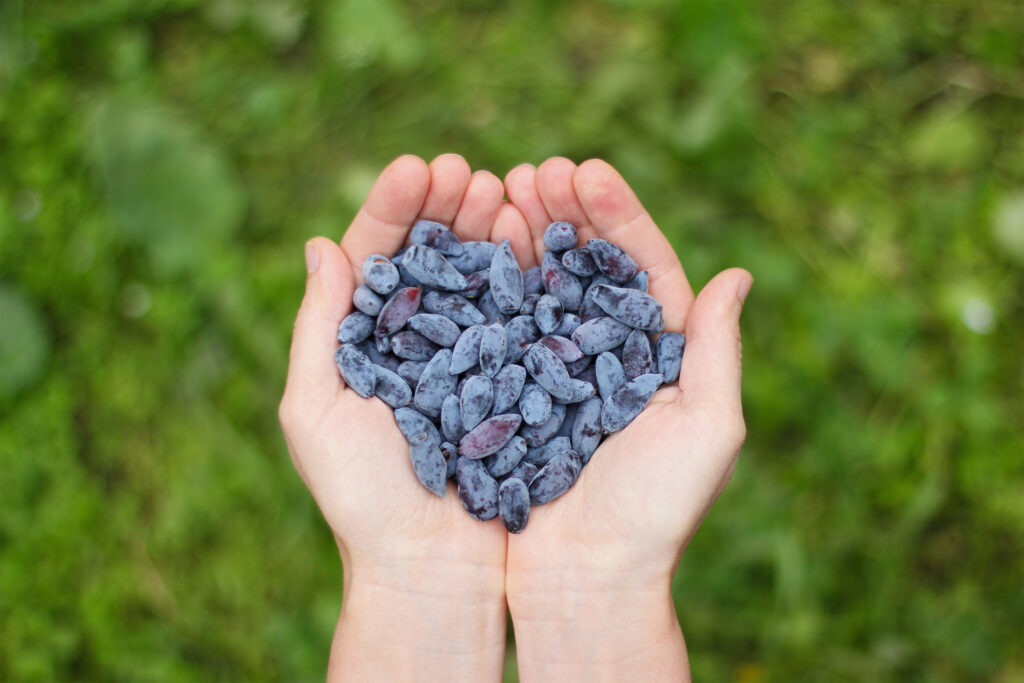
Honeyberries have never been more readily available and accessible. They are easy to grow, highly productive, and full of healthy antioxidants. We hope you’ll pick a spot in your garden for some of these productive fruiting plants and give these edible blue berries a chance.
Jung Seed Company has a wide variety of fruit bushes and trees available! View our color catalog online or browse our website for all of your gardening favorites. To receive info on new products, exclusive deals, and specials, be sure to sign up for our weekly email.
